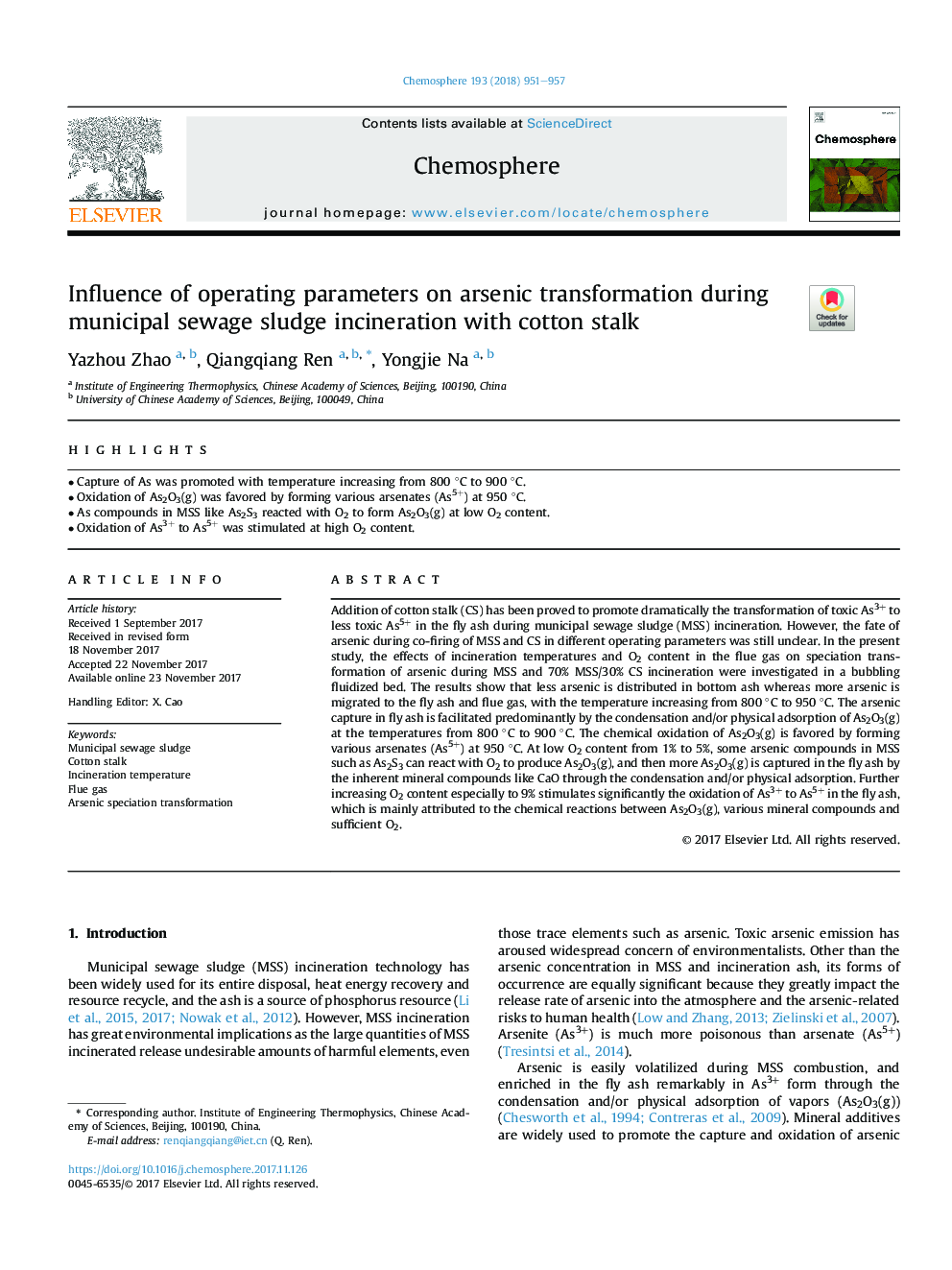| Article ID | Journal | Published Year | Pages | File Type |
|---|---|---|---|---|
| 8852615 | Chemosphere | 2018 | 7 Pages |
Abstract
Addition of cotton stalk (CS) has been proved to promote dramatically the transformation of toxic As3+ to less toxic As5+ in the fly ash during municipal sewage sludge (MSS) incineration. However, the fate of arsenic during co-firing of MSS and CS in different operating parameters was still unclear. In the present study, the effects of incineration temperatures and O2 content in the flue gas on speciation transformation of arsenic during MSS and 70% MSS/30% CS incineration were investigated in a bubbling fluidized bed. The results show that less arsenic is distributed in bottom ash whereas more arsenic is migrated to the fly ash and flue gas, with the temperature increasing from 800 °C to 950 °C. The arsenic capture in fly ash is facilitated predominantly by the condensation and/or physical adsorption of As2O3(g) at the temperatures from 800 °C to 900 °C. The chemical oxidation of As2O3(g) is favored by forming various arsenates (As5+) at 950 °C. At low O2 content from 1% to 5%, some arsenic compounds in MSS such as As2S3 can react with O2 to produce As2O3(g), and then more As2O3(g) is captured in the fly ash by the inherent mineral compounds like CaO through the condensation and/or physical adsorption. Further increasing O2 content especially to 9% stimulates significantly the oxidation of As3+ to As5+ in the fly ash, which is mainly attributed to the chemical reactions between As2O3(g), various mineral compounds and sufficient O2.
Related Topics
Life Sciences
Environmental Science
Environmental Chemistry
Authors
Yazhou Zhao, Qiangqiang Ren, Yongjie Na,
